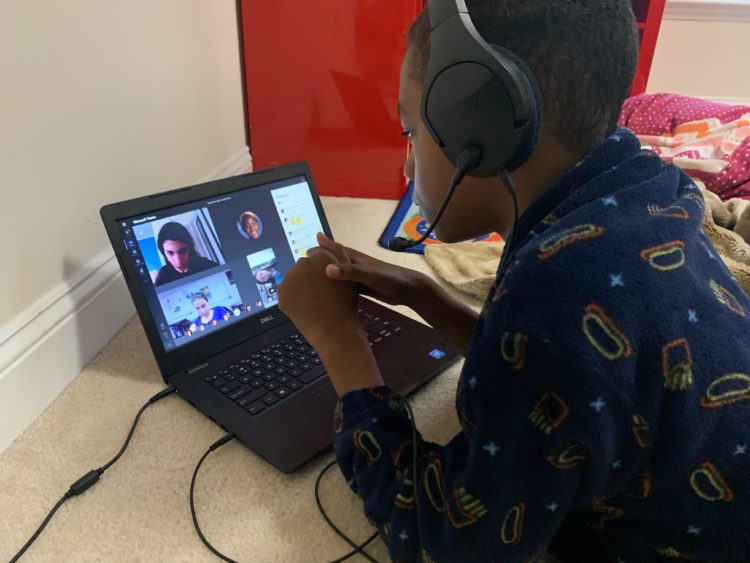April 2, 2020 – The shift from school-based learning to home-based learning has been an interesting — and sometimes challenging — experience for all of us. We’re inspired by the support schools, teachers, parents, and students are sharing with one another through this uncharted territory. To lend a helping hand, we’ve consulted with our Chief Academic Officer Paula Renfro and consolidated some of your best tips.
- Set up a comfortable space for learning. Do not feel pressured to have a “mini classroom” environment. Children just need a space where they feel comfortable sitting, with easy access to the tools they need to learn. Take five minutes as a family and clear any clutter from the space you plan to use.
- Establish a schedule and set clear expectations and goals. In this virtual learning environment, it’s important to balance flexibility with structure to ensure tasks are still being completed. Make this a collaborative conversation with your children.
- Use a checklist to help break up assignments and tasks. If you’re feeling overwhelmed by the schedule, make a checklist of items in order to further breakdown the day. As items are completed, checking them off will help you see your progress.
- Allow time for breaks and exercise. Make sure to set aside time to stretch your legs and step away from the work. Have a 15-minute break here and there to relax, go outside or just chat about how the day is going.
- Have a family meeting to recap the day. Let this be a time for everyone to talk about things they liked, things they struggled with, and things they want to do differently. Consider a ‘highs and lows’ format where they can share their high point of the day and their low point of the day.
- Explore new ways to study. This is a unique opportunity to approach subjects in a new way. Consider testing your child’s knowledge of vocabulary with a game of hangman or charades featuring the words they’re studying.
- Make sure the TV is off and distractions are cleared away. Have a basket on the table for stowing away cell phones and handheld video games so you can avoid any distractions. If background noise helps, consider finding a classical music station. Classical music has been found to improve memory.
- Encourage your child to stay in touch with friends. There are lots of things we can do to shift a child’s education into the home, but with social distancing, we can’t replace the little interactions they have with their friends each day. Encourage your child to catch up with friends during the day, or set virtual playdates for them.
- Stay in touch with other parents too. As much as your child needs the support of their friends, parents need support from each other. Stay in touch with other parents in order to share tips, frustrations and positive experiences.
- Check for updates from your child’s school. As part of your start to the day, check in with your school on social media or on their website to see if there are any announcements or updates.
- Engage in joyous conversation. Do you like to talk about work with your family all day long? Children like to talk about many things outside of “school.” Consider wacky topics, “what if” topics or anything to refocus your time on family and laughter.
- Give yourself a pat on the back. This transition is hard! You are doing your best. We all are. Duval County Public Schools is here to help you each step of the way. You’ve got this!
Are there any helpful tips you have that haven’t been mentioned? How have you overcome the challenges of shifting to a school-from-home environment? Comment and share your insight so that everyone on #TeamDuval can benefit!








